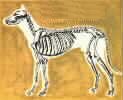United States Companies are World Leaders in the
Manufacture of Torture Devices for Internal Use and Export
In its March 1997 report entitled "Recent Cases of the Use of Electroshock Weapons for
Torture or Ill-Treatment," Amnesty International lists 100 companies worldwide that produce
and sell instruments of torture. Forty-two of these firms are in the United States. This places
the U.S. as the leader in the manufacture of stun guns, stun belts, cattle probe-like devices,
and other equipment which can cause devastating pain in the hands of torturers.
 According to the Amnesty International report, the following are some of
the American companies currently engaged in the production and sale
of such weapons: Arianne International of Palm Beach Gardens, Florida;
B-west Imports Inc., of Tucson, Arizona; and Taserton, of Corona,
California. Arianne International makes the "Myotron," a compact
version of the stun gun. B-West joined with Paralyzer Protection, a
South African company, to produce shock batons that deliver a charge
of between 80,000 and 120,000 volts. Taserton was the first company to manufacture the
taser, a product which shoots two wires attached to darts with metal hooks. When these
hooks catch a victim's skin or clothing, the device delivers a debilitating shock. Los Angeles
police officers used the device against Rodney King in 1991.
According to the Amnesty International report, the following are some of
the American companies currently engaged in the production and sale
of such weapons: Arianne International of Palm Beach Gardens, Florida;
B-west Imports Inc., of Tucson, Arizona; and Taserton, of Corona,
California. Arianne International makes the "Myotron," a compact
version of the stun gun. B-West joined with Paralyzer Protection, a
South African company, to produce shock batons that deliver a charge
of between 80,000 and 120,000 volts. Taserton was the first company to manufacture the
taser, a product which shoots two wires attached to darts with metal hooks. When these
hooks catch a victim's skin or clothing, the device delivers a debilitating shock. Los Angeles
police officers used the device against Rodney King in 1991.
These weapons are currently in use in the U.S. and are being exported to countries all over
the world. The U.S. government is a large purchaser of stun devices, especially stun guns,
electroshock batons, and electric shields. The American Civil Liberties Union (ACLU) and
Amnesty both claim the devices are unsafe and may encourage sadistic acts by police
officers and prison guards, both here and abroad. "Stun belts offer enormous possibilities
for abuse and the infliction of gratuitous pain," says Jenni Gainsbourough of the ACLU's
National Prison Project. She adds that because use of the belt leaves little physical
evidence, this increases the likelihood of sadistic, but hard-to-prove, misuse of these
weapons. In June 1996, Amnesty International asked the Bureau of Prisons to suspend the
use of electroshock belt, citing the possibility of physical danger to inmates and the
potential for misuse.
Terence Allen, a specialist in forensic pathology who served as deputy medical examiner
for both Los Angeles and San Francisco coroner's offices, in 1991 linked the taser to
fatalities. With electrical current, Allen says, the chance of death increases with each use.
Allen warns, "I think what you are going to see is more deaths from stun weapons."
Manufacturers of electroshock weapons continue to denounce allegations that use of their
devices is dangerous and may constitute a gross violation of human rights. Instead, they are
making more advanced innovations. A new stun weapon may soon be added to police
arsenals, the electroshock razor wire, specially designed for surrounding demonstrators
who get out of hand.
- Student Researchers: Carolyn Williams, Susan Allen
Faculty Evaluator: Dan Haytin, Ph.D.
THE PROGRESSIVE
Title: "Shock Value: U.S. Stun Devices Pose Human-Rights Risk"
Date: September 1997
Author: Anne-Marie Cusac
Mainstream Media Coverage:
Chicago Tribune, 3/4/97, page 5, Zone N
Washington Times, 3/4/97, page 16A

 According to the Amnesty International report, the following are some of
the American companies currently engaged in the production and sale
of such weapons: Arianne International of Palm Beach Gardens, Florida;
B-west Imports Inc., of Tucson, Arizona; and Taserton, of Corona,
California. Arianne International makes the "Myotron," a compact
version of the stun gun. B-West joined with Paralyzer Protection, a
South African company, to produce shock batons that deliver a charge
of between 80,000 and 120,000 volts. Taserton was the first company to manufacture the
taser, a product which shoots two wires attached to darts with metal hooks. When these
hooks catch a victim's skin or clothing, the device delivers a debilitating shock. Los Angeles
police officers used the device against Rodney King in 1991.
According to the Amnesty International report, the following are some of
the American companies currently engaged in the production and sale
of such weapons: Arianne International of Palm Beach Gardens, Florida;
B-west Imports Inc., of Tucson, Arizona; and Taserton, of Corona,
California. Arianne International makes the "Myotron," a compact
version of the stun gun. B-West joined with Paralyzer Protection, a
South African company, to produce shock batons that deliver a charge
of between 80,000 and 120,000 volts. Taserton was the first company to manufacture the
taser, a product which shoots two wires attached to darts with metal hooks. When these
hooks catch a victim's skin or clothing, the device delivers a debilitating shock. Los Angeles
police officers used the device against Rodney King in 1991. 